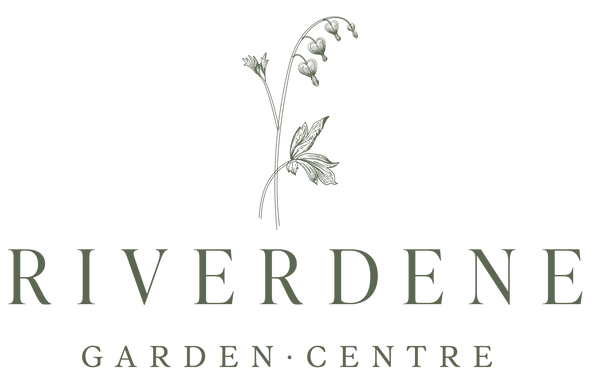
Fertilizer - basics
Understanding Fertilizer: A Beginner's Guide to Helping Your Plants Thrive
If you're new to gardening, you’ve probably heard that fertilizer can be an important part of helping your plants grow strong and healthy. But with so many different types of fertilizer available, understanding the numbers on the bag can seem overwhelming. This guide will break down what you need to know so you can choose the right fertilizer for your garden with confidence.
What is Fertilizer?
Fertilizer is like a multivitamin for your plants—it provides nutrients that might not be available in the soil. Just like how our bodies need vitamins and minerals to stay healthy, plants need certain nutrients to grow, produce flowers, and bear fruit.
The main nutrients that plants need are nitrogen (N), phosphorus (P), and potassium (K). These three elements are usually displayed on fertilizer bags as a set of three numbers.
What Do the Numbers on Fertilizer Mean?
When you pick up a container of fertilizer, you’ll see a series of three numbers that are separated by dashes (for example, 10-10-10 or 5-10-5). These numbers represent the percentage by weight of nitrogen, phosphorus, and potassium in the fertilizer. Here’s a simple breakdown:
-
Nitrogen (N) – The first number
-
What it does: Nitrogen is crucial for leafy growth. It helps plants produce lush, green leaves, which is why fertilizers high in nitrogen are often used for lawns and leafy vegetables like spinach or lettuce.
-
Example: If a fertilizer is 15-10-10, it means 15% of the fertilizer is nitrogen.
-
-
Phosphorus (P) – The second number
-
What it does: Phosphorus helps with root development and the production of flowers and fruits. It’s especially important for plants that bloom or produce vegetables and fruit.
-
Example: In a 10-15-10 fertilizer, 15% is phosphorus, supporting strong roots and blooms.
-
-
Potassium (K) – The third number
-
What it does: Potassium helps plants build strong cells, making them more resistant to diseases, cold, and drought. It also improves overall plant health.
-
Example: In the same 10-10-15 bag, 15% is potassium, which boosts the plant's resistance to stress.
-
What Do the Rest of the Ingredients Do?
The remaining percentage in the bag is made up of filler material, which helps distribute the nutrients evenly. Some fertilizers may also contain other trace minerals like magnesium, calcium, or iron, which are also beneficial but not included in the main N-P-K ratio.
How Do I Choose the Right Fertilizer for My Plants?
Choosing the right fertilizer depends on the type of plants you're growing and what they need at different stages of their life cycle. Here’s a simple guide for beginners:
-
For leafy plants (like herbs, lettuce, or grass):
-
Use a fertilizer with a higher nitrogen content. A ratio like 10-5-5 will promote healthy, green leaves.
-
-
For flowering plants (like roses, marigolds, or fruiting vegetables like tomatoes):
-
Choose a fertilizer with more phosphorus to encourage blooms. Something like 5-10-5 is good for flowers and fruits.
-
-
For all-purpose use:
-
If you're looking for something versatile, a balanced fertilizer such as 10-10-10 works for most plants and is great if you’re just starting out.
-
When and How Should I Fertilize?
When it comes to fertilizing, timing is important. Fertilizing too often can overwhelm plants and cause more harm than good, but under-fertilizing can result in slow growth. Here’s a simple schedule to follow:
-
Houseplants: Fertilize every 4-6 weeks during the growing season (spring and summer). In fall and winter, they don’t need much, if any, fertilizer.
-
Bedding Plants and Flowers: Fertilize every 4 weeks during their growing season to promote blooms.
-
Lawns: Fertilize lawns in the spring and again in early fall to keep grass green and healthy.
Always follow the directions on the fertilizer bag for how much to use. Over-fertilizing can "burn" your plants, causing damage to roots and leaves.
Organic vs. Synthetic Fertilizer: What’s the Difference?
-
Organic fertilizers are made from natural materials like compost, manure, or bone meal. They release nutrients slowly over time, improving soil health and structure.
-
Synthetic fertilizers are chemically made and provide a quick nutrient boost. They are more concentrated and can be less expensive but need to be applied carefully to avoid over-fertilizing.
Both options can work well, but organic fertilizers tend to be more environmentally friendly and improve soil quality over time.
Final Thoughts
Understanding fertilizer doesn’t have to be complicated. By focusing on the N-P-K numbers and choosing the right balance for your plants, you can provide them with the nutrients they need to thrive. Start with the basics, pay attention to your plants, and adjust your fertilizing habits as needed.
Remember, healthy plants grow from healthy soil, so think of fertilizer as a way to supplement, not replace, good gardening practices like proper watering and sunlight.
